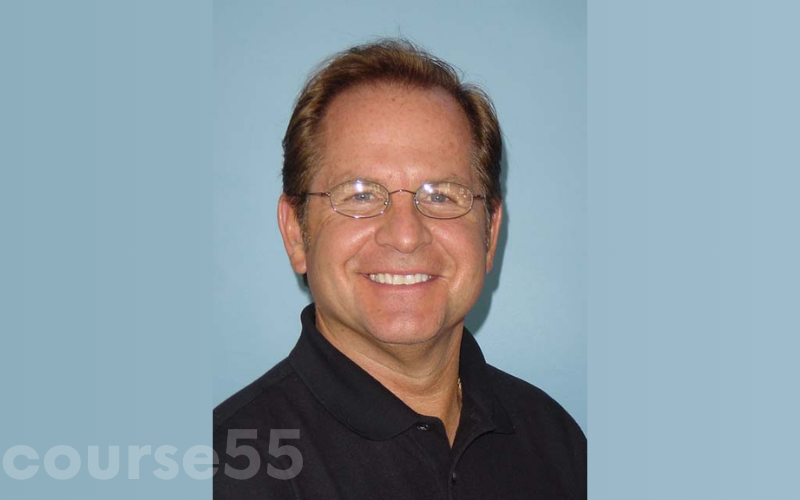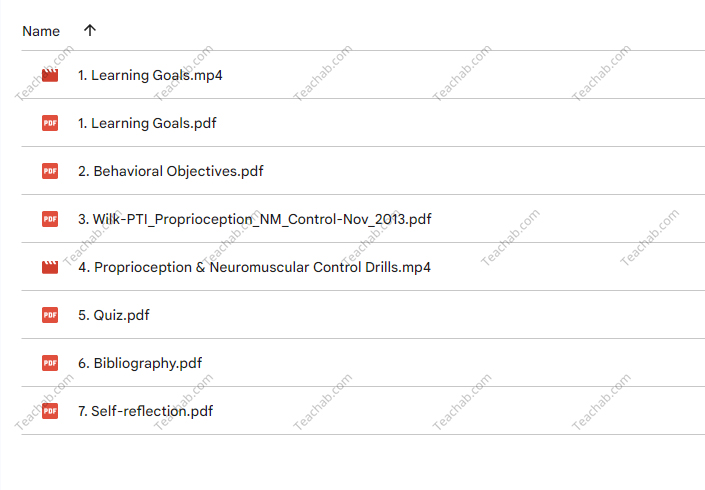Wilk PTI Online: Proprioception & Neuromuscular Control Drills for the ACL Patient By Kevin Wilk
$45.00 Original price was: $45.00.$15.00Current price is: $15.00.
Wilk PTI Online: Proprioception & Neuromuscular Control Drills for the ACL Patient by Kevin Wilk
Content Proof:
In the realm of sports medicine, the recovery from anterior cruciate ligament (ACL) injuries is notoriously challenging, both physically and mentally. Kevin Wilk’s program, “Wilk PTI Online: Proprioception & Neuromuscular Control Drills for the ACL Patient,” emerges as a beacon of hope for patients and healthcare professionals alike. This meticulously designed online course addresses the urgent need for effective rehabilitation strategies, emphasizing the significance of proprioception our body’s ability to sense joint position and neuromuscular control, which are pivotal in restoring functionality and averting future injuries. Wilk’s approach not only highlights a series of targeted drills but also delves deep into the science underpinning rehabilitation, making it an indispensable resource for tackling ACL recovery with confidence and precision.
Understanding Proprioception and Its Importance in ACL Rehabilitation
Proprioception plays a fundamental role in human movement and function, akin to a symphony where every musician must be in harmony to produce a beautiful sound. Just as a maestro guides their orchestra, the brain orchestrates proprioceptive feedback from the body to control movements effectively. Following an ACL injury, proprioceptive abilities often become impaired, necessitating focused attention during rehabilitation. By enhancing proprioception, patients gain the ability to maintain balance and control, which are critical for returning to sports or daily activities.
The landscape of neuromuscular control intertwines with proprioception in the rehabilitation process. Neuromuscular control refers to the brain’s ability to coordinate muscle activity and joint stability. Research has shown that patients who restore their proprioceptive skills effectively experience improved outcomes and reduced re-injury rates. Therefore, movements that challenge balance, coordination, and reaction time are central to the rehabilitation protocols Wilk presents. Exercises such as standing drills on various surfaces like stable ground, foam, or wobble boards highlight the dynamic interplay between proprioception and neuromuscular control, fostering an engaging and productive recovery environment.
Key Drills and Exercises in the Wilk PTI Program
The Wilk PTI program encompasses a comprehensive suite of drills aimed at cultivating both proprioceptive awareness and neuromuscular control among ACL patients. The drills are structured progressively, starting with simpler activities to build a solid foundation and advancing to more complex movements that challenge the body. Here’s a brief overview of some essential exercises featured in the course:
- Standing Drills on Stable Surfaces
- Focuses on balance and core stability.
- Engages major muscle groups while promoting confidence in standing posture.
- Dynamic Balance Exercises
- Involves movement-based activities like catching a ball while standing on one leg.
- Enhances coordination and reaction times, mirroring real-life athletic demands.
- Foam Surface Training
- Incorporates balance boards and foam pads to challenge stability.
- Helps improve joint awareness and muscle activation through uneven terrain.
- Multi-Directional Movements
- Encourages changes in direction and speed while maintaining control.
- Essential for athletes, as these drills mimic the unpredictable nature of sports.
The beauty of these exercises lies in their progressive nature; patients start with foundational movements and gradually incorporate elements that require more significant balance and control. This method ensures that rehabilitation is not a monotonous task but an evolving journey toward recovery.
The Science Behind Rehabilitation: A Critical Analysis
In his program, Kevin Wilk does not shy away from discussing the scientific foundations that justify the exercises and drills he proposes. Numerous studies underline the link between impaired proprioception and increased risk of re-injury, stressing that rehabilitation strategies must begin immediately after an injury. For example, a study published in the Journal of Orthopaedic & Sports Physical Therapy highlights that early proprioceptive training can enhance postural control and reduce knee instability among ACL patients (Hewett et al., 2014). Such insights reinforce the concept that a proactive approach is necessary to mitigate the detrimental effects of ACL injuries on neuromuscular pathways.
Furthermore, the course addresses the psychological aspects of recovery an often underestimated component in rehabilitation. Many patients confront fears of re-injury, making it vital to instill confidence through structured drills. By progressively increasing the complexity and intensity of exercises, patients can rebuild their trust in their bodies, allowing for a smoother transition back to their desired activities. The emotional and mental fortitude required to overcome such injuries parallels the physical challenges, highlighting the holistic nature of the rehabilitation journey.
Implications and Broader Perspectives on Rehabilitation
The implications of Kevin Wilk’s course extend beyond individual rehabilitation. As sports participation continues to rise, so does the incidence of ACL injuries, particularly among athletes engaged in high-impact sports. The ACL rehabilitation landscape calls for effective programs that not only address recovery but also instill preventive measures. By focusing on proprioception and neuromuscular control, Wilk’s program contributes to a larger conversation about injury prevention, establishing a vital foundation for ongoing athlete care.
Healthcare professionals equipped with the tools and knowledge gained from this program are better poised to design personalized rehabilitation strategies. As evidenced by the current research and clinical practices, the integration of proprioceptive and neuromuscular components can significantly enhance recovery outcomes. Moreover, emphasizing these elements can serve as a preventive measure against potential re-injury, thus reducing healthcare costs and improving the longevity of athletes’ careers.
In the broader context, Wilk’s program serves not only as a guide for practical rehabilitation techniques but also as a critical resource for understanding the underlying processes affecting recovery and performance. This approach aligns well with the principles of evidence-based practice, where clinical decisions are grounded in the best available research.
Conclusion
The “Wilk PTI Online: Proprioception & Neuromuscular Control Drills for the ACL Patient” program is a paradigm of how rehabilitation can evolve through a blend of scientific knowledge and practical application. By focusing on proprioception and neuromuscular control, Kevin Wilk offers a robust framework for both patients and healthcare providers navigating the complexities of ACL recovery.
Ultimately, this program is not just about overcoming an injury; it is about empowering individuals to reclaim their physical identity and return to the activities they love, underscoring the resilience of the human spirit. As those recovering from ACL injuries embark on their rehabilitation journey, they do so with the clarity of purpose that Wilk’s insights provide transforming pain into progress, and restoring confidence with every step.
Frequently Asked Questions:
Business Model Innovation: We use a group buying strategy that enables participants to share costs and access popular courses at lower prices. This approach helps individuals with limited financial resources, although it may raise concerns among content creators regarding distribution methods.
Legal Considerations: Our operations navigate complex legal issues. While we do not have explicit permission from course creators to resell their content, there are no specific resale restrictions mentioned at the time of purchase. This lack of clarity allows us to offer affordable educational resources.
Quality Control: We guarantee that all course materials provided are identical to those offered directly by the creators. However, please note that we are not official providers. As a result, our services do not include:
– Live coaching calls or sessions with the course author
– Access to exclusive author-controlled groups or portals
– Membership in private forums
– Direct email support from the author or their team
Our goal is to make education more accessible by offering these courses independently, without the additional premium services available through official channels. We appreciate your understanding of our unique approach.
Be the first to review “Wilk PTI Online: Proprioception & Neuromuscular Control Drills for the ACL Patient By Kevin Wilk” Cancel reply
You must be logged in to post a review.
Related products
Healthcare
Healthcare
Sung in Tai Chi 2023: Distinguishing Relaxing and Releasing Your Qi – Bruce Frantzis, Craig Barnes
Healthcare



















Reviews
There are no reviews yet.